8/27 Pre Lecture Videos (Bitwise Logic Operations, Integer Arithmetic Overflow, Bit-Level Shift Operations, Integer Casting)
1/17
There's no tags or description
Looks like no tags are added yet.
Name | Mastery | Learn | Test | Matching | Spaced |
|---|
No study sessions yet.
18 Terms
Bitwise Logic Operations
Examples: (Variables A and B are N-bit signed/unsigned built-in data types
A & B
A | B
~A
A ^ B
Explain the steps to perform bitwise operations starting from hex
Convert the hex number to binary
If a ‘not’(~) operation, write the complement of each digit
Otherwise (there are 2 numbers), align bit vectors and write the result of the operation of each digit
Convert back to hex
ANDing
The use of the bitwise AND operation for Masking groups of bits
Ex. 10101110 & 00001111 = 00001110
Selects last 4 bits
ANDing brings all the bits you had back (yield back 1) if you mask with 1s. If you mask with 0s, then all the bits you don’t need are gone (yield 0)
For Clearing groups of bits
10101110 & 00001111 = 00001110
0’s clear first 4 bits
It’s kinda like an editor for bits
a ∧ True = a
a ^ False = False
ORing
useful for “setting” groups of bits
ex 10101110 | 00001111 = 10101111
1’s set last 4 bits
0s don’t change anything
a ∨ False = a
a ∨ True = True
XORing
Useful for “complementing” (inverting) groups of bits
ex 10101110 ^ 00001111 = 10100001
1s invert last 4 bits
0s return the initial bit (it doesn’t change anything)
a ⊕ True = ~a
b ⊕ False = b
When does Signed Arithmetic Overflow occur?
When the sum of two signed integers >max value or <min value
What happens as a result is that the value goes back down
7 + 7 in a 4bit 2s complement will result in -2 instead of 14 because the max is 7
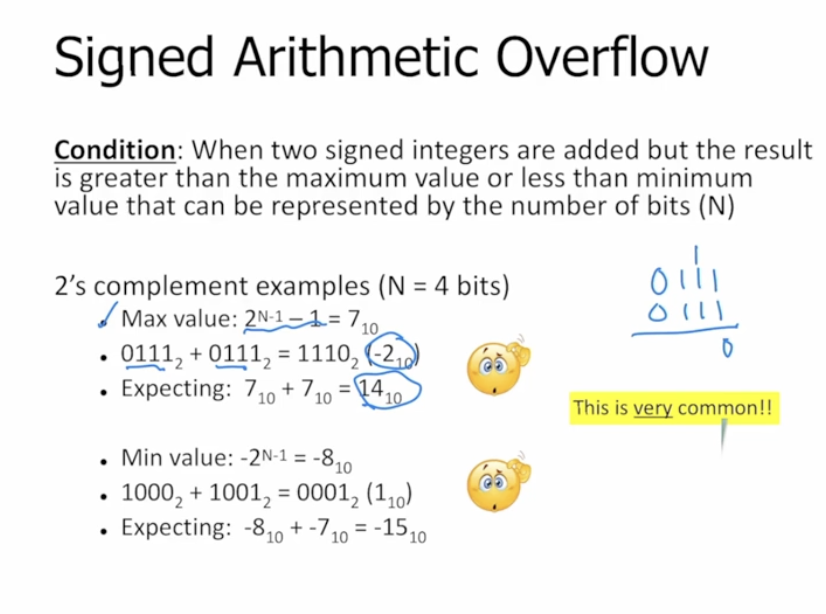
How can we detect when signed arithmetic overflow has occured in 2s complement?
[Positive Int] + [Positive int] = [Negative Int]
[Negative Int] + [Negative Int] = [Positive Int]
![<p>[Positive Int] + [Positive int] = [Negative Int]</p><p>[Negative Int] + [Negative Int] = [Positive Int]</p>](https://knowt-user-attachments.s3.amazonaws.com/8f2eb969-a360-41af-a7b3-fb1c1902eef4.png)
When does Unsigned arithmetic Overflow occur?
Sum of two unsigned integers > max value that can be represented by N number of bits
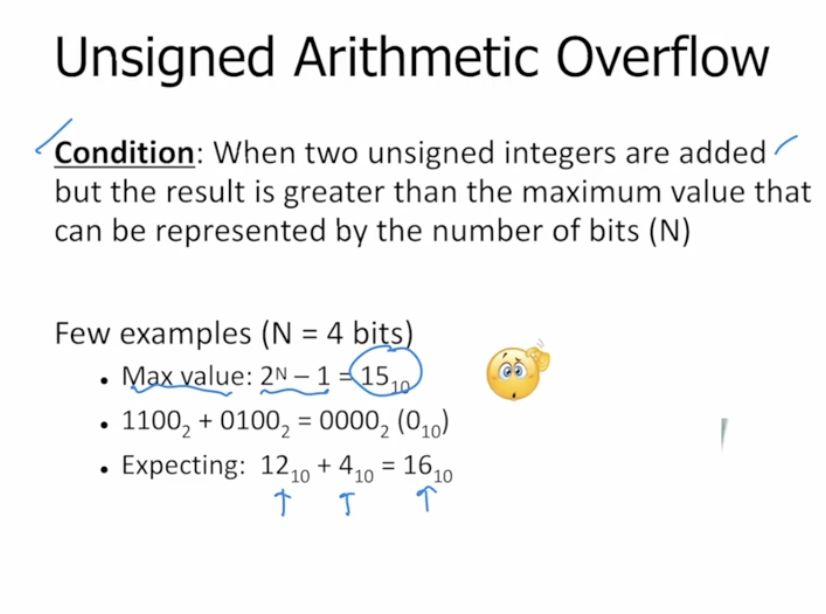
How can we detect Unsigned arithmetic Overflow
If the MSB Carry-out bit is one
If the carry-out is zero, then there is no overflow
Carry Out is the “carry the 1” thing

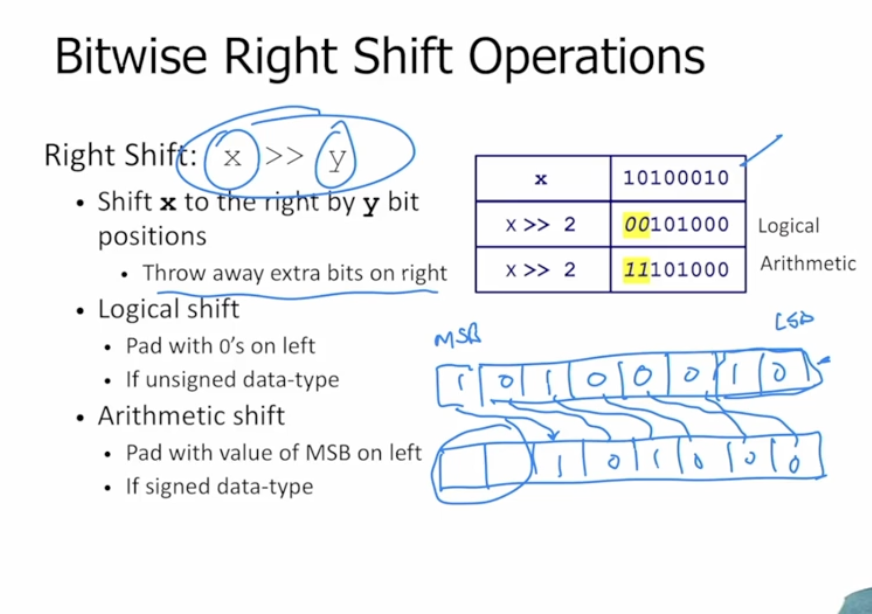
Bitwise Right Shift Operation
x >> y
Shift x to the right by y bit positions
Throw away extra bits on right
Pad with 0’s on left (always logical)
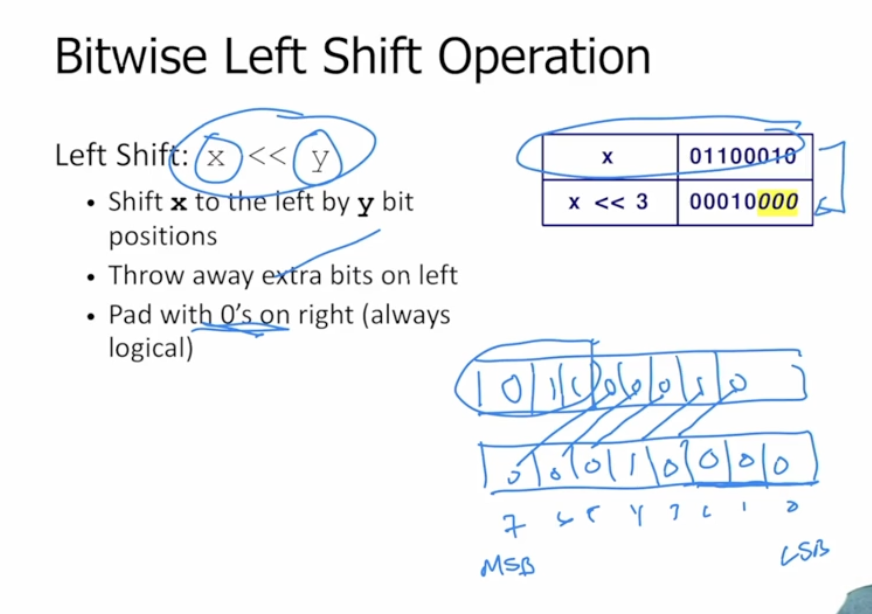
Bitwise Left Shift Operation
x << y
Shift x to the left by y bit positions
Throw away extra bits on left
Pad with 0’s on right (always logical)
Logical Shift
Pad with 0s on left
IF unsigned data type
Does it work with left shift? I don’t think so because it wouldn’t need to pad anything on the left.
Arithmetic Shift
Pad with value of MSB on left
If Signed Data type (This way, we preserve the sign from the MSB)
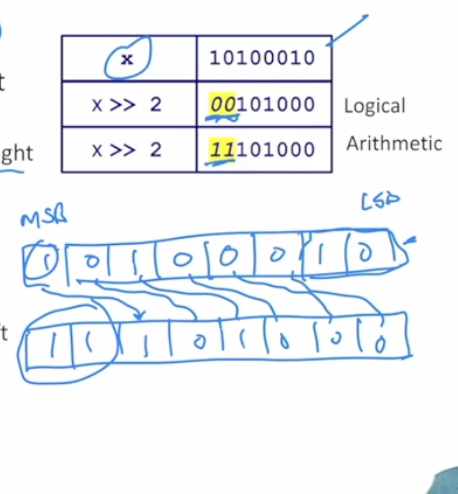
Bitwise Shift: Multiplication CONFUSING
u << kgivesu * 2kShifting u left by k digits, is u times the power of whatever the shift amount is
Logic Shift does not preserve the sign-bit; so this multiplication rule doesn’t apply to that
Most machines
shift and add/sub instructions are faster than a multiply instruction
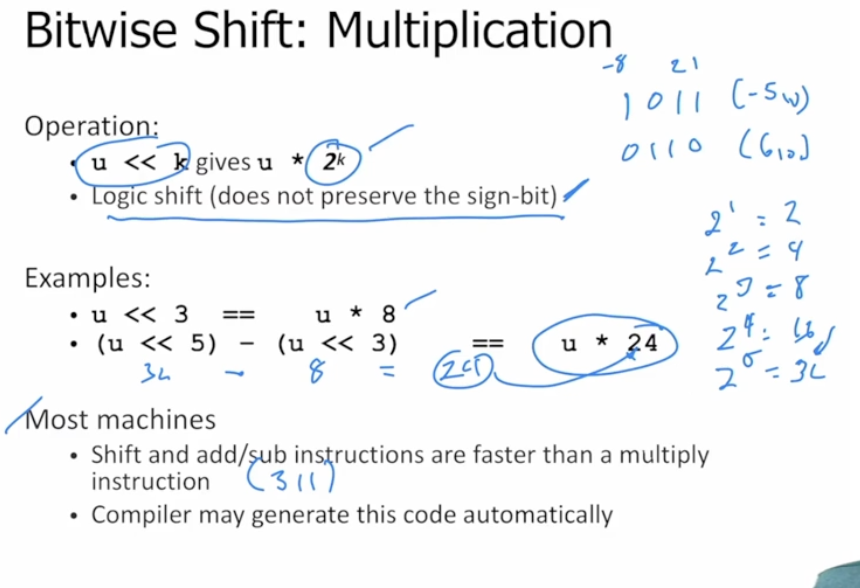
How does (u << 5) - (u << 3) = u *24 ?
Bitwise Shift: Division
u > > k gives floor(u / 2^k)
Logical shift does not preserve the sign bit
Arithmetic shift preserves the sign bit (2s complement)
What does casting ultimately do?
Change the interpretation of the MSB

How can we avoid the mistake of converting a negative integer into a positive integer when performing an unsigned cast operation?
Use the Absolute Value Format
abs() stdlib Library when data type is a signed integer
fabs() in the math library when the data type is a floating-point value